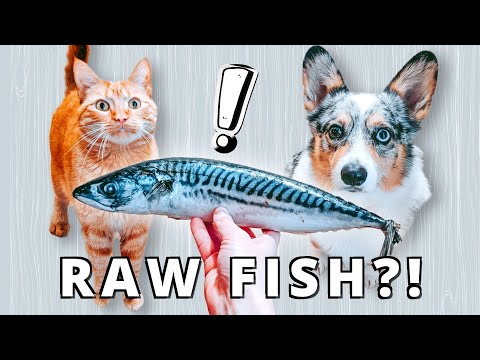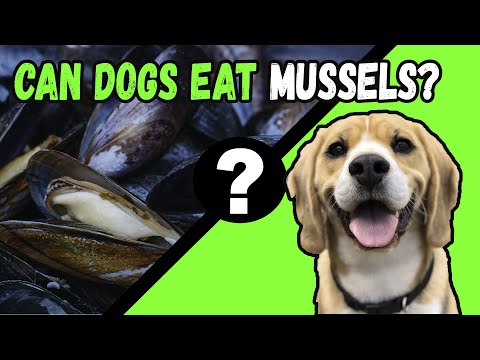
Many pet owners wonder about adding seafood to their dog diet. Fish and shellfish offer nutritional benefits but also pose risks if not prepared properly. The debate centers on balancing health advantages with potential hazards.
Certain types of fish are safer than others. Smaller species with shorter lifespans, like salmon or whitefish, often contain fewer toxins. Proper preparation—removing bones and avoiding heavy seasoning—is crucial for safety.
Moderation remains key, even with vet-approved options. Overfeeding seafood may lead to nutritional imbalances or digestive issues. This guide explores safe practices, benefits, and precautions for including aquatic proteins in meals.
Is Seafood Safe for Dogs?
Toxins in fish vary widely depending on species and habitat. Smaller varieties, like sardines or anchovies, accumulate fewer heavy metals due to their short lifespans. These types are often safer choices.
Thorough cooking eliminates parasites such as Neorickettsia, commonly found in raw salmon. Always debone fish to prevent choking hazards. Farm-raised options may contain antibiotics unless ASC-certified.
Safety checks before serving:
- Smell: Avoid fish with ammonia-like odors.
- Fat content: Prioritize omega-3-rich options.
- Preparation: Steam or bake without seasoning.
Shellfish require extra caution. Remove all shells and limit portions to avoid digestive upset. Always consult a vet before introducing new proteins.
Benefits of Seafood in a Dog’s Diet

Rich in essential fatty acids, fish and shellfish provide unique health perks. These marine-sourced foods deliver nutrients often missing from traditional meats, supporting overall vitality.
Omega-3 Fatty Acids for Skin and Coat
Omega-3 fatty acids reduce inflammation, promoting a glossy coat and soothing joint discomfort. Smaller fish like sardines offer concentrated doses without heavy metals.
Krill oil serves as a clean supplement alternative. Regular intake may ease arthritis symptoms and improve skin elasticity.
High-Quality Protein Source
Lean protein in seafood aids muscle development without excess fat. Ideal for active pets or those with poultry allergies, it’s a digestible source of amino acids.
Essential Vitamins and Minerals
Seaweed and fish provide iodine, selenium, and antioxidants.
“Sardines with bones add calcium, while salmon supplies vitamin D,”
notes a veterinary nutritionist.
Key nutrients include:
- Vitamin B12: Boosts energy metabolism.
- Iron & Zinc: Support immune function.
- Vitamin A: Enhances vision and cell growth.
Potential Risks of Feeding Seafood to Dogs

While seafood offers nutritional perks, hidden dangers lurk beneath the surface. Certain species contain high levels of mercury or harbor harmful parasites, turning a healthy treat into a risk. Understanding these hazards helps pet owners make safer choices.
Mercury and Heavy Metal Toxicity
Large fish like tuna and swordfish accumulate mercury over their lifespans. This toxin can cause tremors, blindness, or even fatal poisoning. Smaller species, such as sardines, are safer alternatives with minimal metal content.
Farmed fish may also carry PCBs or antibiotics unless ASC-certified. Always research sourcing to reduce exposure to contaminants.
Parasites and Bacterial Infections
Raw or undercooked seafood often carries parasites like roundworms or tapeworms. Salmon poisoning disease, caused by Neorickettsia, is life-threatening if untreated. Cooking fish thoroughly eliminates these risks.
Bacteria like Salmonella thrive in raw shellfish. Symptoms include vomiting and diarrhea—prompt vet care is crucial.
Allergic Reactions
Some pets develop allergies to shellfish or fish proteins. Watch for itching, hives, or facial swelling after feeding. Thiamine deficiency is another concern with excessive fish consumption, affecting the nervous system.
Emergency signs:
- Swelling: Lips, eyelids, or throat.
- Digestive distress: Persistent vomiting or diarrhea.
- Lethargy: Sudden weakness or collapse.
Safe Seafood Options for Dogs
Veterinarians often recommend specific seafood varieties for optimal health. Prioritizing fish safe dogs ensures a balance of nutrition and safety. Wild-caught, deboned, and minimally processed options top the list.
Cooked Salmon: A Nutrient Powerhouse
Wild-caught salmon, thoroughly cooked and deboned, delivers *EPA/DHA* fatty acids. These support brain function and reduce inflammation. Always remove bones to prevent choking hazards.
Sardines and Anchovies: Tiny but Mighty
Packed in water, sardines offer calcium-rich bones and skin. Anchovies provide an omega-3 boost without heavy metals. Avoid smoked or marinated versions to limit sodium.
Krill Oil: A Stable Supplement
This oil contains astaxanthin, a natural preservative. It’s a sustainable alternative to fish oil, ideal for pets with sensitive stomachs. A drizzle over meals enhances nutrient absorption.
Vet-approved additions:
- Dried seaweed: Sprinkle nori for iodine and magnesium.
- Whitefish: Low-fat option for sensitive systems.
- Mussels: Steam and chop for glucosamine benefits.
Seafood to Feed in Moderation
Borderline-safe options demand extra precautions. While some types of marine foods offer nutritional perks, they require strict limits to avoid health risks. Always prioritize preparation methods and sourcing.
Shellfish: Shrimp and Crab
Shellfish like shrimp and crab can be occasional treats if prepared correctly. Remove all shells to prevent intestinal blockages. Wild-caught shrimp are preferable to avoid antibiotic residues.
Cook thoroughly to kill harmful bacteria. Serve plain—no butter or garlic. Overfeeding may trigger allergies or pancreatitis.
Canned Tuna: Low-Sodium Only
Tuna packs mercury, so limit portions to once weekly. Opt for water-packed, low-sodium versions. Skip oil or flavor additives that upset stomachs.
Smaller Atlantic mackerel is a safer alternative. King mackerel, however, contains high mercury levels.
Farm-Raised vs. Wild-Caught Fish
Farm-raised fish often carry higher contaminant loads. ASC-certified tilapia is an exception, meeting stricter standards. Avoid imports with lax regulations.
Wild-caught options generally offer cleaner protein. Check for sustainability certifications like MSC.
- Mussels: Steam and chop—ensure toxin-free sourcing.
- Sardines: Rich in omega-3s; choose bone-in for calcium.
- Anchovies: Low-metal choice; rinse to reduce salt.
Seafood Dogs Should Never Eat
Certain seafood varieties pose severe threats to pets, requiring complete avoidance. These items contain high levels of toxins or physical hazards that outweigh any nutritional benefits. Immediate veterinary care may be needed if ingested accidentally.
Raw or Smoked Salmon
Raw fish, especially salmon, carries the Neorickettsia parasite. This organism causes salmon poisoning disease—fatal without treatment within days. Smoking doesn’t kill the parasite, making smoked versions equally dangerous.
Symptoms include fever, vomiting, and dehydration. Cooking at 145°F (63°C) destroys the parasite safely.
Fish Bones and Shells
Fish bones splinter easily, risking intestinal perforations or choking. Even small bones in canned sardines require removal. Shellfish shells create obstructions and may harbor harmful bacteria.
Always debone fish thoroughly. Opt for boneless fillets or pre-ground options.
High-Mercury Fish
Large species like tuna, swordfish, and tilefish accumulate mercury over time. High-mercury fish can cause neurological damage or kidney failure. Shark and king mackerel also exceed safe limits.
Safer alternatives include wild-caught sardines or ASC-certified tilapia.
Other prohibited items:
- Imitation crab: Packed with starch, artificial flavors, and excessive sodium.
- Sushi: Often contains avocado (toxic) and seasoned rice vinegar.
- Breaded/fried seafood: Oils and batter trigger pancreatitis.
When in doubt, consult a veterinarian to minimize risk. Emergency signs—like seizures or bloody stool—require immediate intervention.
How to Safely Introduce Seafood to Your Dog
Transitioning pets to new proteins should be done gradually. Start with a teaspoon-sized portion for small breeds to test tolerance. Consult a vet for allergy-prone animals before altering their dog diet.
For safe inclusion:
- Begin small: Offer a 1-inch salmon cube. Monitor for itching or digestive upset.
- Cook plainly: Steam or bake without oils, garlic, or salt. Seasonings harm pet health.
- Freeze raw fish: Two weeks in deep freeze kills parasites. Thaw before cooking.
- Adjust portions: A 40-lb pet needs ¼ cup sardines weekly. Smaller breeds require less.
Keep emergency vet contacts handy. Novel foods may trigger reactions—act fast if symptoms appear.




